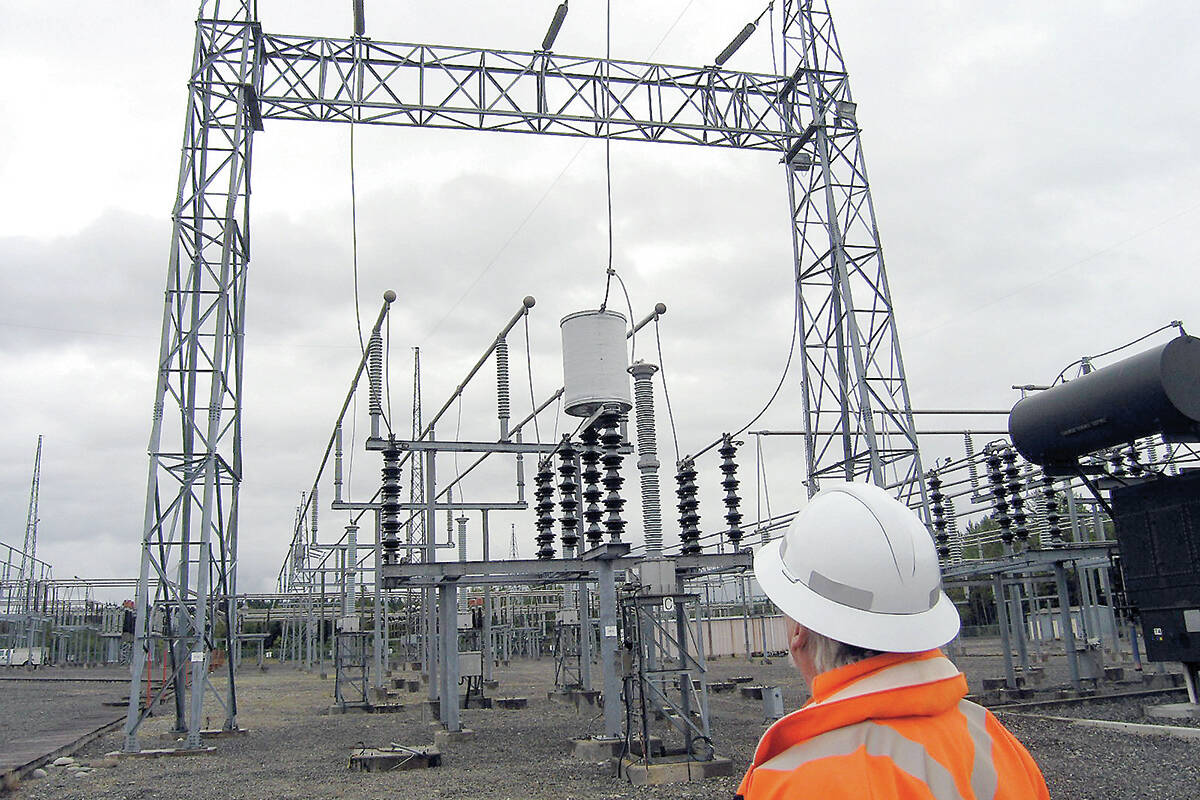Northwest B.C. First Nations are lining up to buy into electricity transmission lines and other energy production related projects in the region.
Through K’uul Power, formed just last month, 11 First Nations say they’ll assist each other in exploring and developing the economic and other benefits to come from equity participation with the public and private sectors.
The group already has its eye on a long-standing plan by BC Hydro to build a 500-kilovolt line roughly paralleling the existing one from the Williston Substation south of Prince George to the Skeena Substation south of Terrace.
Buying into the line would fit with a mandate given to BC Hydro by the provincial government to involve First Nations in the ownership and construction of new transmission lines.
Planning by BC Hydro to date would have feeder lines running from its Skeena Substation into the Nass Valley and extra capacity for the Kitimat area.
Extra capacity into Kitimat would fit in with the Haisla Nation-involved Cedar LNG project just outside Kitimat and running a line into the Nass would dovetail with Ksi Lisims LNG, a Nisga’a Nation-involved project set for off the north coast and now going through an environmental assessment.
Both LNG projects have already incorporated hydroelectric power into their concept of being part of the low-carbon emitting economy.
But LNG projects by themselves would only represent about one-quarter of the 5,000 megawatts of power BC Hydro has been telling First Nations is needed based on expressions of interest from different economic sectors, says Wesley Sam, the chief councillor of the Tsil Kaz Koh First Nation in Burns Lake and chair of K’uul Power.
Other potential developments include new mines, continued expansion of port facilities in Prince Rupert and even using hydro to produce hydrogen as an energy source.
Sam said construction of power lines from Prince George to Terrace, from Terrace to Kitimat, from Terrace to Prince Rupert and from Terrace to the Nass Valley is conservatively estimated to cost $8 billion.
But he also said K’uul Power’s interest in power generation and transmission extends beyond the large projects.
“We’re looking at powering up communities that don’t have three-phase power so that they can participate in the new green economy,” Sam said. “There are First Nations that want to participate in the new economy but are unable to do that, they need to modernize their lines.”
”We want this to move forward in a good way, in a green way, in a healthy way. It’s not just First Nations that will benefit. It’s British Columbia and surrounding communities who will also benefit.”
Sam said a complete vision of K’uul Power [K’uul means ‘coming together as one’] could take 50 to 100 years to realize.
“We have a lot of First Nations at the table. The door is open for all First Nations. We’re working as a collective and inclusive. We’re just getting started.”
Details of how First Nations would gather the capital and financing needed for equity participation have yet to be worked out. K’uul Power has hired technical and legal advisors experienced in First Nations equity in transmission lines elsewhere in Canada for advice.
READ ALSO: Indigenous communities leading the switch to renewable energy in the North

